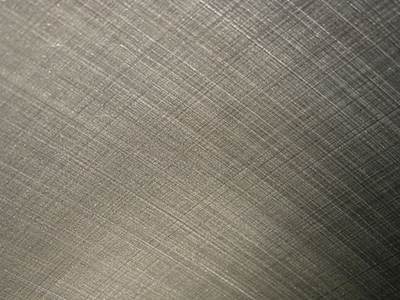Tool Feed Technology Enhances Production Honing
Nothing throws a wrench into a production machining operation like variation in the incoming parts.
Nothing throws a wrench into a production machining operation like variation in the incoming parts. This obstacle surfaces particularly during abrasive machining processes such as honing, which is typically used to improve the quality of workpieces produced with upstream processes that may include boring, plating, drilling, reaming and heat treating. Once dialed in for one set of part conditions, an established production honing process can be thrown off balance when the mix of incoming part conditions or material parameters changes. In some cases, workpieces possess complicating variations of their own, such as the wall-thickness differences inherent to cartridge valves, connecting rods and injector bodies.
Typically, a production honing process is set up to use an abrasive tool with a specific grit size and bond optimized for incoming part conditions. Tool expansion to achieve the desired results and final size is programmed based on rate of time. The tool feed system then performs the same way on each cycle, starting with touch-off, sensed through spindle load or the force sensed on the tool feed system. Cycle time is always the same. However, when a batch of parts comes in with a different heat treatment than the prior batch, the operator must intervene. In this case, the tool may expand too quickly for conditions and be damaged. In the opposite case with a softer-than-normal workpiece, the tool will still expand at its programmed rate, when it might have been able to expand faster to reduce cycle time. Expansion at too slow a rate may also result in glazing of the honing stones, which won’t self dress if the cutting force is too low. Typically, the operator tweaks the feed rate periodically to compensate for these variables.
Maintain Control
New tool feed technology that servo-controls the force in the honing tool feed system changes this dynamic entirely. The new Controlled-Force feature, which works in concert with the machine’s standard rate-feed system, functions like cruise control to maintain the optimum cutting load on the honing abrasive throughout a cycle, without regard to the incoming part’s hardness, geometry or size variation. In effect, the machine can detect what is happening in the bore when the abrasive contacts it, whereas with rate-feed alone, the machine feeds the tool per the program, not according to the real conditions the part is experiencing.
With Controlled-Force honing, the machine still uses a programmed feed rate, which is then increased or decreased to maintain a setpoint for the force load on the tool feed system. If the feed force drops off, the system increases the tool feed rate to compensate, resulting in faster cycle time. Feed force is monitored every few milliseconds during the cycle to ensure the tool always feeds at the highest rate possible for part conditions.
Presenting the Case
In a typical scenario on a small pump bore, the tool expands rapidly at the start of the cycle until the system senses 150 N of force, and then climbs gradually to its 200 N setpoint.
Controlled-Force honing is particularly suitable for applications using metal-bond abrasives. In extensive tests with cartridge valve cages, it reduced cycle times by 25 to 50 percent. In testing with diesel cylinder liners, it cut cycle time 50 percent.
The Controlled-Force honing process is also engineered to produce more consistent surface finish results. In one application with hard steel parts, standard rate-feed honing produced Rz values of 2 to 7 microns. With Controlled-Force honing, the process consistently holds Rz between 5 to 6.5 microns.
Controlled-Force honing sometimes allows use of harder, more-durable abrasive bonds, where softer bonds may have been required in the past. As a result, the part yield for a given set of abrasives increases, while the abrasive cost drops. Likewise, Controlled-Force technology eliminates glazing of the abrasive because of too little cutting force. This ensures a steady, free-cutting, self-dressing condition for maximum metal removal in the shortest possible cycle time.
Connecting rods illustrate the advantage in honing parts with varying wall thickness. The con rod has the beam on one side (so the rod is very rigid in this thicker area) and the cap on the other side where wall thickness is considerably thinner. As a result, the bore has a tendency to distort more in the weaker area during honing. On these workpieces with irregular wall thickness, Controlled-Force ensures that the system never overloads the tool and distorts the bore.
Rate-feed will still be the exclusive tool feed methodology with certain honing tools that use a full wrap-around sleeve of metal-bonded diamond abrasive (rather than segments of abrasive) for full contact with the bore surface. These tools are particularly useful for bridging segmented bores, multiple lands, ports, keyways or crossholes. Rate-controlled feeding provides as many as five expansion profiles that can be used during a cycle for rapid part touch, cutting, sizing, finishing and spark-out.
Controlled-Force tool feed gives users a new choice to optimize cycle time, abrasive consumption and labor use in a production environment where batches of incoming parts may vary slightly. It is available on new machines or as a retrofit for the SV-1000 and SV-500 Series.
Read Next
When The Bore Needs More
Somtimes high precision is mandatory. This artilce looks at honing as a process to meet tight specs.
Read MoreFinding the Right Tools for a Turning Shop
Xcelicut is a startup shop that has grown thanks to the right machines, cutting tools, grants and other resources.
Read MoreHow To (Better) Make a Micrometer
How does an inspection equipment manufacturer organize its factory floor? Join us as we explore the continuous improvement strategies and culture shifts The L.S. Starrett Co. is implementing across the over 500,000 square feet of its Athol, Massachusetts, headquarters.
Read More



















